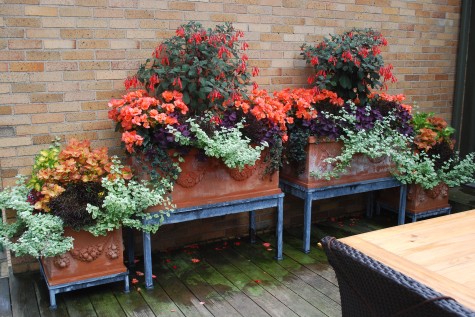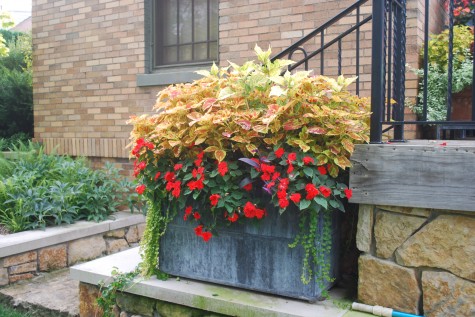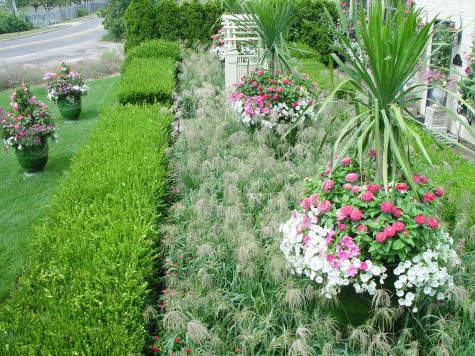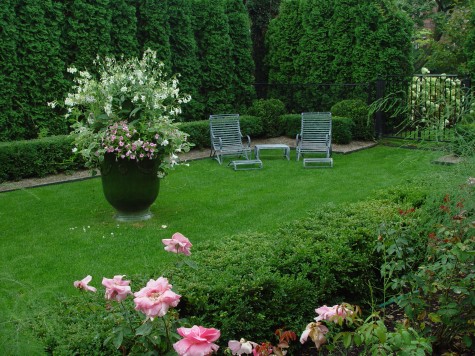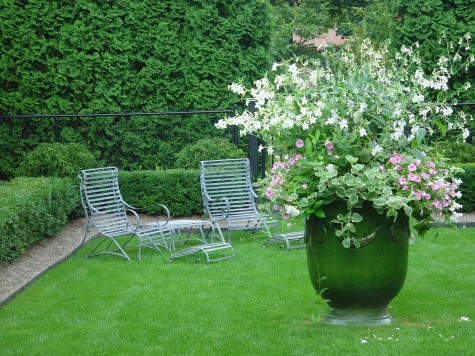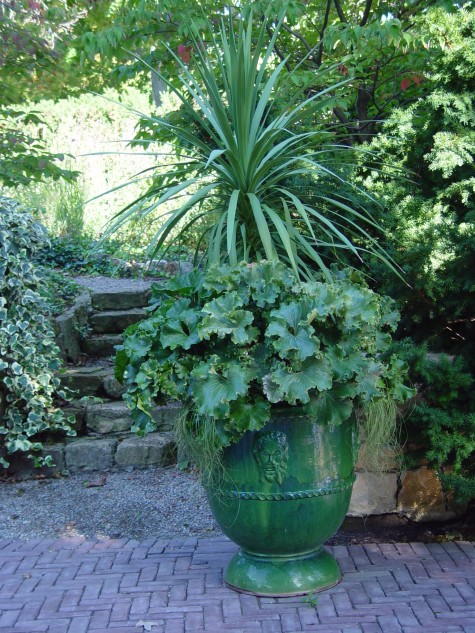Last year at this time I wrote a post about window boxes. They are a hybrid vehicle; you have the control of the soil and water as you do with a container, with something of that generous square footage you get planting in the ground. As I still like this description, I will revisit the idea. Window boxes have all the advantages of containers. Perfect drainage. A height that is convenient to plant. A soil mix of your own choosing. They go on to make it possible to have flowers on the second story, or the roof, or on a balcony railing. They are a fine way to put flowers in the foreground of your views from inside out.
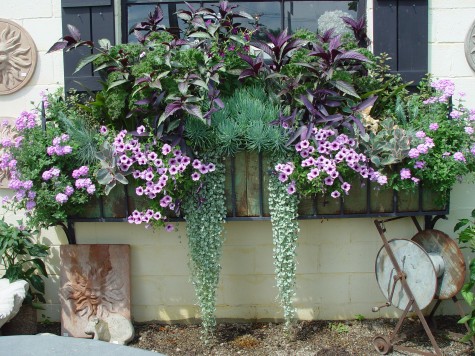 My shop has 7 giant window boxes-it is heavenly to choose the plants, plant, and watch them become a garden. I have sized them not only to hold lots of plants, but also to hold a sufficient soil mass to keep the moisture level even. The bottom half of the box is drainage material; annuals are very shallow rooting. Overpotting them can lead to troubles with fungus or rot. This box was organized around the relationship of blue green and red violet. I will admit I shopped plenty of places to get just the right colors and lively textural contrast.
My shop has 7 giant window boxes-it is heavenly to choose the plants, plant, and watch them become a garden. I have sized them not only to hold lots of plants, but also to hold a sufficient soil mass to keep the moisture level even. The bottom half of the box is drainage material; annuals are very shallow rooting. Overpotting them can lead to troubles with fungus or rot. This box was organized around the relationship of blue green and red violet. I will admit I shopped plenty of places to get just the right colors and lively textural contrast.
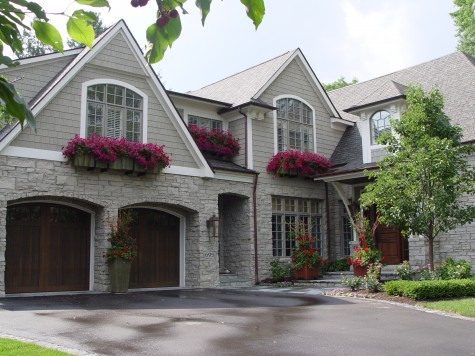 These second story boxes permit lots of flowers where a large portion of the front of the house is driveway. Neighborhood lots can be small, and houses large. Flowers on the second story make a big splash from the street. The boxes are fine company for the containers at ground level. A good irrigation contractor can water your boxes automatically, and subtly. It is no substitute for hand watering, but automatic irrigation can buy you a little time when you are late getting to the watering. Proper watering is critical to success with annuals-no matter where you plant them.
These second story boxes permit lots of flowers where a large portion of the front of the house is driveway. Neighborhood lots can be small, and houses large. Flowers on the second story make a big splash from the street. The boxes are fine company for the containers at ground level. A good irrigation contractor can water your boxes automatically, and subtly. It is no substitute for hand watering, but automatic irrigation can buy you a little time when you are late getting to the watering. Proper watering is critical to success with annuals-no matter where you plant them.
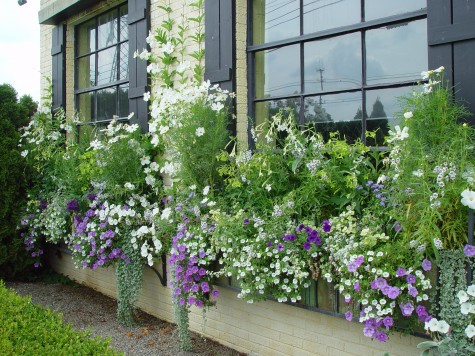 I have clients with window boxes eight inches wide, and as deep. Unless you plant succulents, it is impossible to keep water on boxes of such a small soil mass. To look right, window boxes need to be made specifically for the windows they feature-so the window and the box read as one visual idea. I like boxes that go wide of the actual window. This makes it possible to plant tall plants, or climbers, as a frame for that window. Undersized boxes have a way of making a window look oppressively top heavy. Glass appears to be dark, or black from the outside, unless the interior lights are on.
I have clients with window boxes eight inches wide, and as deep. Unless you plant succulents, it is impossible to keep water on boxes of such a small soil mass. To look right, window boxes need to be made specifically for the windows they feature-so the window and the box read as one visual idea. I like boxes that go wide of the actual window. This makes it possible to plant tall plants, or climbers, as a frame for that window. Undersized boxes have a way of making a window look oppressively top heavy. Glass appears to be dark, or black from the outside, unless the interior lights are on.
 Window boxes reinvented as railing boxes can provide lots of visual interest where the railing is part of a pass through, and not a seating area. One year, I did these boxes in herbs, lavender, and a few pale flowers.
Window boxes reinvented as railing boxes can provide lots of visual interest where the railing is part of a pass through, and not a seating area. One year, I did these boxes in herbs, lavender, and a few pale flowers.
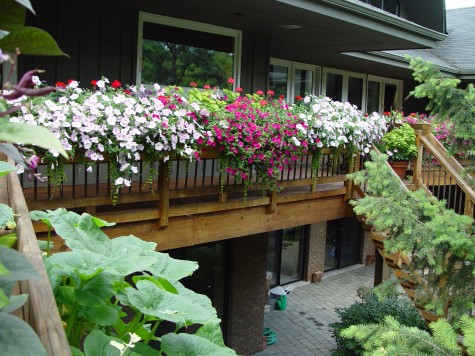 Another year they were alive with bright color; by the end of the summer, it was a hanging garden extravaganza.
Another year they were alive with bright color; by the end of the summer, it was a hanging garden extravaganza.
 These window boxes actually sit on the ground. They add a great deal ofcarefully edited interest to the spare facade of this home. The boxwood live in these boxes year round. The boxes are really steel rectangles-there is no need to have a bottom. A landscape that is quite modern in design can handle window boxes, properly done.
These window boxes actually sit on the ground. They add a great deal ofcarefully edited interest to the spare facade of this home. The boxwood live in these boxes year round. The boxes are really steel rectangles-there is no need to have a bottom. A landscape that is quite modern in design can handle window boxes, properly done.
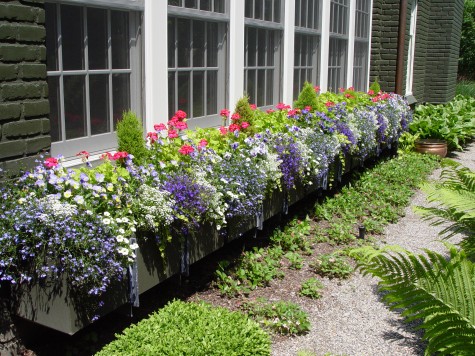 The low windows of the porch/sunroom asked for window boxes. The flowers look great from inside. Not obvious in this picture-the lot line is a scant 10 feet from the wall of the sunroom. Window boxes can provide for a garden in tight spaces too small to plant in ground.
The low windows of the porch/sunroom asked for window boxes. The flowers look great from inside. Not obvious in this picture-the lot line is a scant 10 feet from the wall of the sunroom. Window boxes can provide for a garden in tight spaces too small to plant in ground.

There is something so inviting and pleasing about a window box; I would not do without them.
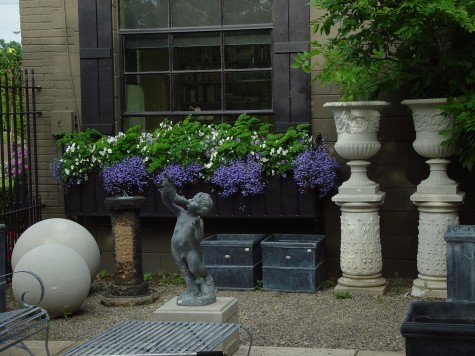
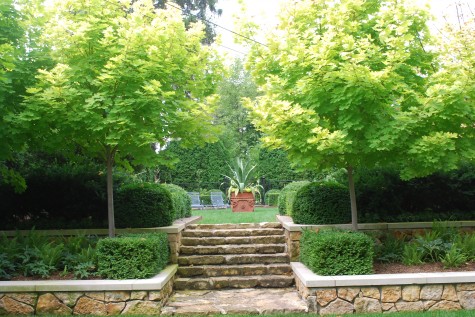
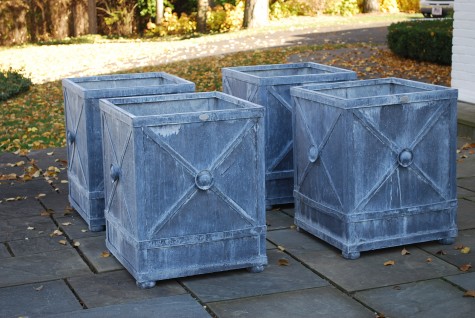
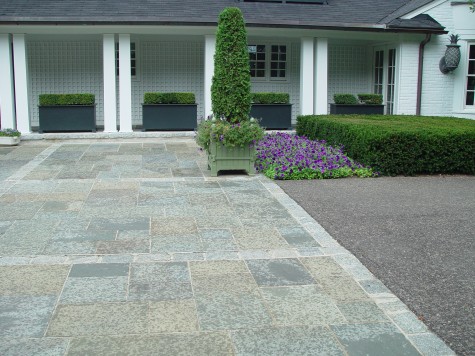
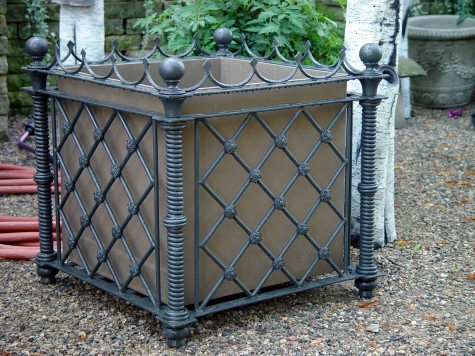

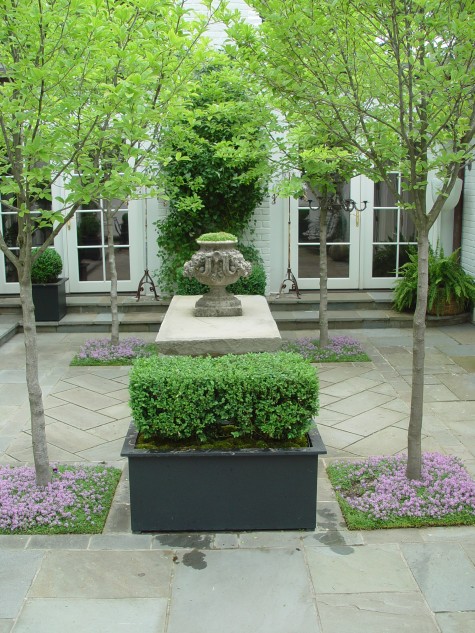
![37a1[1]](https://deborahsilver.com/wp-content/uploads/2010/05/37a11.jpg)
